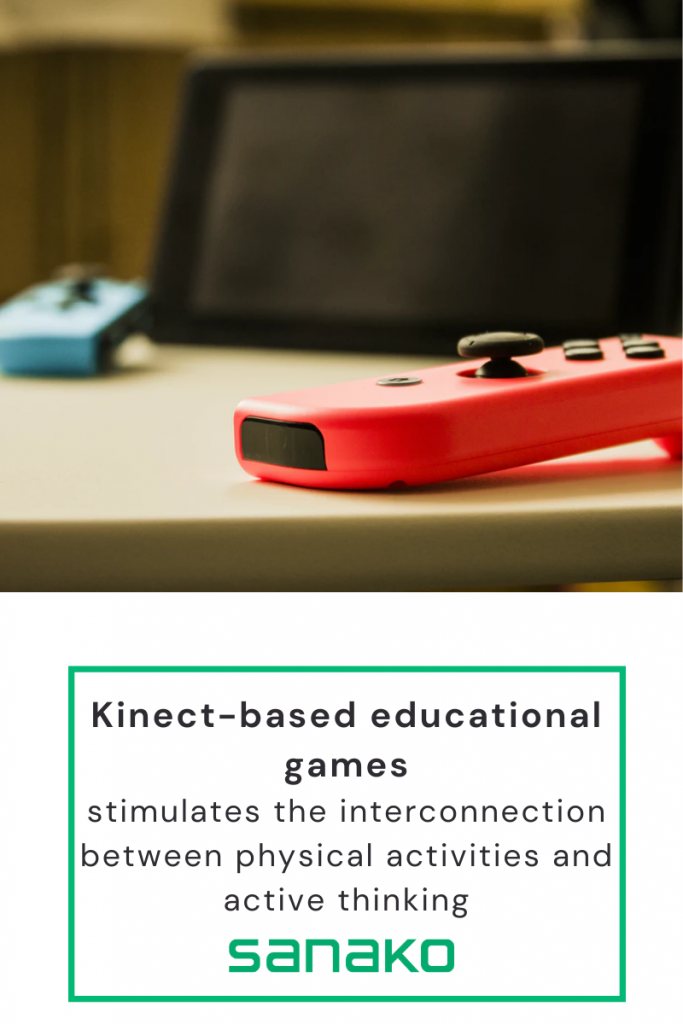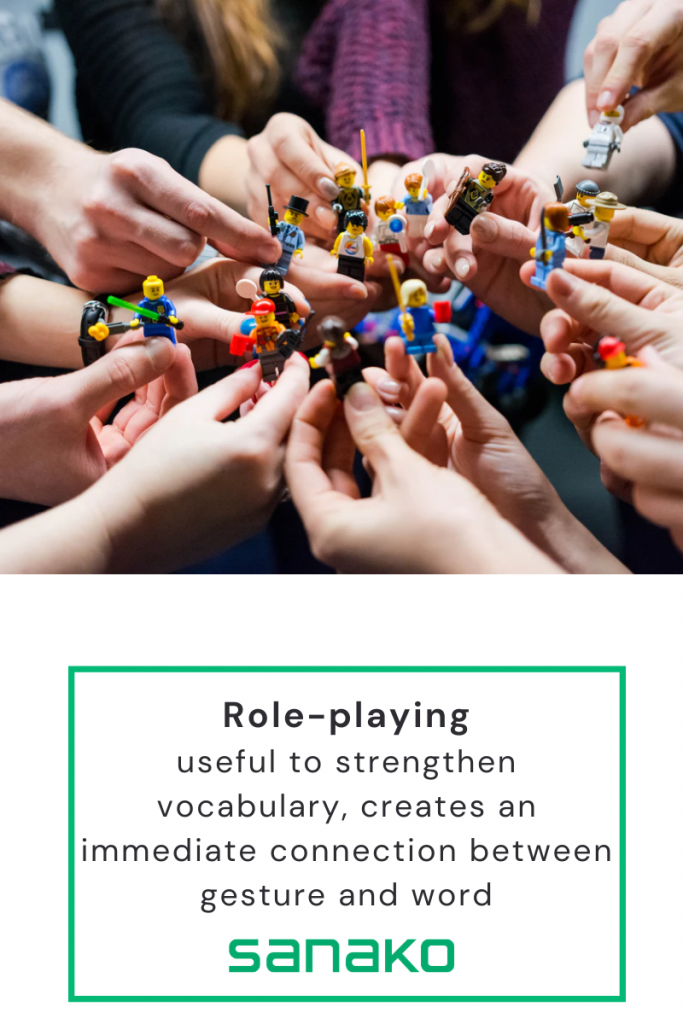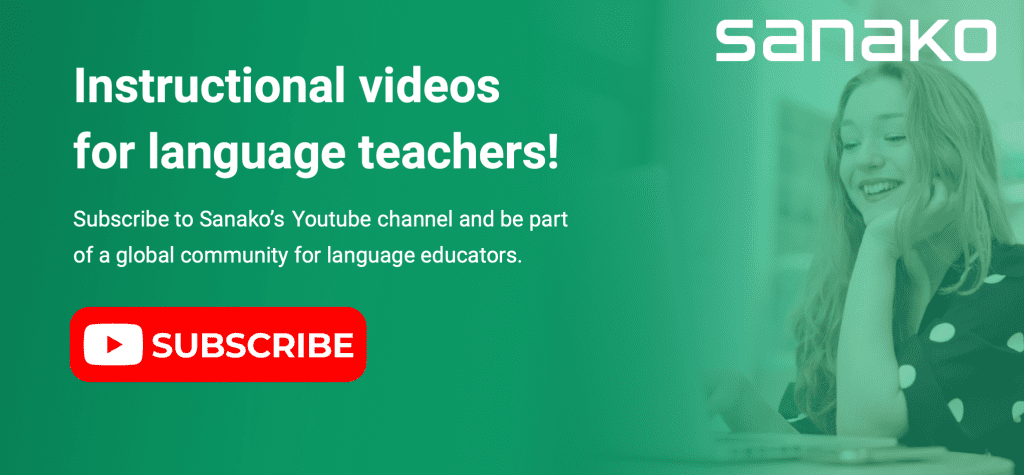The fruitful use of embodied learning techniques within different educational contexts has given further confirmation that everyone learns differently from the others. This applies especially to the study of languages which can follow different patterns of learning. As an example, for many people the physical component is as much involved in the learning process as the mental one.
Consequently, pedagogical research has tried to develop an educational model focused on the use of the body during lessons in order to stimulate the involvement of students and, consequently, to improve the learning process as a whole.
This learning model is called embodied learning. What it is then and how it works? That is the topic we are going to explore further in this article!
The way we learn(ed)
It seems almost trivial to say that we could not live any kind of experience, not even of intellectual nature, without the presence of the body. But indeed the importance of the physical dimension has long been overshadowed by the cognitive sciences.
In fact, the dichotomy between body and mind, originally set by Cartesian philosophy, was later rooted in contemporary theories of the nature of knowledge and language.
One of the aspects common to the cognitivist theories that developed between the 70s and 80s of the Twentieth century, was that the mind and its processes, including language, had no direct link with external objects.
This approach, which divides mind and body, has been absorbed by the main school practices in the United States and Europe. Thus deeply influencing the way in which students learn.
As a consequence, the learning experience, conceived as a purely mental process, is implemented through exclusively mental processes: reading, listening, repeating.
During the 21st century, pedagogical science has tried to introduce innovations in traditional education, with the aim of providing the most adequate preparation for an increasingly complex and changing reality.
With respect to the traditional dualistic conception of body and mind as separate entities, embodied learning aims to renew school practices and educational psychology by bringing the physical dimension to the center of the classroom.
What is embodied learning?
How can we define embodied learning? An effective description of the idea is provided by an OECD report, which defines embodied learning as:
“Pedagogical approaches that focus on the non-mental factors involved in learning, and that signal the importance of the body and feeling.”
Embodied learning, rooted in the interdisciplinary realms of cognitive science and neuroscience, and often referred to as “embodied cognition,” has garnered significant attention in educational research. It centers on the idea that cognitive processes are not confined to the brain alone but are intricately linked to our physical experiences and bodily interactions with the environment, challenging traditional, disembodied views of cognition. This educational paradigm underscores that learning is not solely a product of abstract mental faculties but is profoundly influenced by the dynamic interplay between the body, brain, and the external world, shedding new light on how we acquire and retain knowledge.
Therefore, the focus of embodied learning is the relationship between body and mind. From this, derive the key pedagogical principles of this method, summarized as follows in a 2013 study:
-
- Body and mind cooperate in the learning process.
- Action and thinking are intertwined.
- There is a connection between movements and concepts.
To sum up, the central tenet of this approach is that action and thinking are assumed as two simultaneous moments of the learning process.
The language and the body
The study of the process by which children learn to speak, which includes ”a multitude of sensorimotor acts“, has inspired experiments aimed at testing the effectiveness of embodied learning in modern languages classes.
With regard to the study of a foreign language, a recent study realized two physically active scenarios and compared the learning outcomes with those of a sedentary scenario.
The experiment highlighted some beneficial aspects of the use of embodied learning methodology within foreign language classes.
Firstly, the study recorded a greater emotional involvement in students involved in physical activities than those in the sedentary scenario.
Equally important, is the fact that the study revealed a significant impact of physical activities on the cognition faculties of the students.
Then again, the research underlines the set of experimental data that have demonstrated a positive correlation between physical activities and children’s learning outcomes:
Positively influencing children’s enjoyment though classroom-based physical activity is relevant for cognition, since changes in positive affect have been found to mediate the relationship between cognitive engaging activities and children’s attentional performance.
Indeed, this type of conclusion is reiterated by the firm itself, which notes that the experiment has shown that the embodied learning and the physical activity scenarios were “more effective in teaching children new words” than the sedentary scenario.
How to apply embodied learning in your language classroom?
To be sure, there are many physical activities that one could envision to bring in the language classroom.
However, for brevity’s sake, we just want to point out some of the active learning solutions that we consider to be the most engaging and profitable for the study of foreign languages. Let’s check out the list below, then.
1. Games that include movement
Motion sensing technology is at the core of the Kinect-based games from Microsoft and from other tech-companies (eg. Nintendo Wii). Similarly, Augmented and Virtual Reality devices and games immerse the player/learner deep into movement and make them be in the scene rather than being just an outside observer. Today, there are many games utilising these technologies in the market that also are usable for language teaching and learning needs.
2. Role-playing and acting
Role-play is one of the all-time favorite language learning activities for many language teachers. This is an effective technique to get learners engaged, and make language learning a fun and more immersive experience. A simple example is to assign student groups to present a simple scene from a popular movie or a story in the target language.
3. Drawing comics
Drawing and arts combine thinking and movement in a very natural and enjoyable way. This is a language learning activity that triggers many senses and processes, including not only the hand movement but also attaching a picture and images to the right words and context.
Total Physical Response and Embodied Learning
It should also be noted that there is a specific language teaching approach called Total Physical Response (TPR) that shares a lot of similarities with the broader concept of Embodied Learning. TPR is a teaching method that involves using physical actions and commands in the language classroom. Instructors can issue commands in the target language, and students must respond with corresponding physical actions. This method helps build a strong connection between language and action.
Embodied learning, on the other hand, is a broader concept that encompasses a wide range of strategies and activities for language learning, including TPR itself. Educators may choose to use TPR as one of the embodied learning strategies within their language teaching toolbox, tailoring their approach to the needs and goals of their students.
By incorporating these embodied learning strategies into the language classroom, educators can create a dynamic and engaging learning environment that promotes a deeper understanding of the language and culture while making learning more enjoyable and memorable for students.
If you’re a language teacher who’s looking for inspiration to design and explore new teaching methods, then do check out Sanako’s Youtube Channel for instructional videos for language educators. Subscribe now and be part of our global community for language educators!
Resources and citations used in this article:
C. Svendler Nielsen et al., Young people’s embodied voices: Experiences and learning in dance education practices across the world.
Edsys, How to bring in the concept of Embodied Learning in Classrooms?
M. Macedonia, Embodied Learning: Why at School the Mind Needs the Body, in Frontiers in Psychology, 10/2019.
M. Schmidt et al., Embodied learning in the classroom: Effects on primary school children’s attention and foreign language vocabulary learning, in Psychology of Sport and Exercise, 2019.
Frankfurt International School, Language learning styles.
OECD, Teachers as Designers of Learning Environments. The Importance of Innovative Pedagogies.
This blog post was last updated 12 October, 2023.





